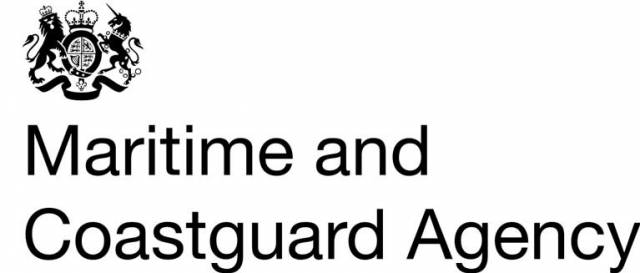Members of the boating community in the UK are being encouraged to ‘have their say’ on the Maritime & Coastguard Agency’s new Code of Practice for Intended Pleasure Vessels and its supporting Guidance Notices as well as some new Exemptions.
The public consultation launches today 1 August and runs for 8 weeks until the 26 September.
The Code of Practice for Intended Pleasure Vessels (IPV Code) and its supporting Guidance Notices – which will be introduced on 1 January 2019 - addresses temporary commercial use either for business purposes or as a race support boat.
The MCA is urging the boating community to read through the proposals on how they plan to make the water a safer place for everyone while giving the opportunity to legitimately operate commercially on a temporary basis for certain activities. The IPV Code team will be available to discuss the new framework at a series of key dates throughout the Southampton Boat Show.
Additionally, the MCA is replacing Marine Guidance Notice 538 on Pleasure Vessels which introduces exemptions that mark a significant positive step for the Pleasure Vessel manufacturing sector in the UK and phases out the use of ORC liferafts.
Ian Lardner, Head of Marine Technology for the MCA said: ‘We have been working extremely closely with our partners at British Marine (BM), Royal Yachting Association (RYA) and the Yacht Brokers, Designers and Surveyors Association (YBDSA) to bring about this very positive and significant step for the boating community. The new IPV Code allows people to use their Pleasure Vessels on a temporary single-voyage basis for sea trials, deliveries or race support activities, without using the existing commercial vessel codes which are intended for a more longer-term commercial use. We’re providing a simple means of compliance to rules that have always existed, with negligible burdens. We all think this a huge step forward and we hope as many people as possible will take the time to read through the consultation to see if there are any further developments we could consider.’
RYA Cruising Manager, Stuart Carruthers, said: 'The Introduction of the IPV Code and the guidance for owners to provide race support activities for a yacht or powerboat race is a very positive step and provides a much-needed solution to a number of problems that race organisers and support staff have struggled with in the past.
'In addition, the application of the IPV Code to vessels used at sea on a single-voyage basis by owners, brokers, surveyors and repairers for business purposes relating to sale, repair, post-repair or mid-survey sea trials, customer sea trials and for vessel delivery in connection with the business purpose is also welcomed and it is very much to RYA members’ advantage for this code and associated MGNs to be adopted.'
Bas Edmonds, RYA Racing Services Manager, added: 'It’s extremely pleasing to see the MCA support the delivery of our sail racing by looking to exempt those boats supporting race activities. The IPV Code and associated MGNs provide a framework of achieving compliance for owners and parents wanting to support the sport, which is hugely welcomed by the RYA.'
British Marine’s Technical Manager, Ross Wombwell said: ‘This Code of Practice for sea-trialling and transportation provides the industry with an affordable and achievable solution, and provides much-needed clarity on what had been a regulatory grey area for our members and boat owners for a number of years. British Marine is rightly proud of the work that it has done, supported by many of its members, alongside the regulator (the Maritime & Coastguard Agency), the Royal Yachting Association (RYA) and the Yacht Designers & Surveyors Association (YDSA), to develop this new process and guidance.
‘Now we need members and owners to review this Code of Practice and let us and the MCA know their thoughts - on the practicalities of applying these new rules, the benefits they bring, the costs involved etc.
‘British Marine is on hand to answer any queries from its members on this new Code of Practice and we will be engaging the membership further over the coming months, with Q&As and guidance available at TheYachtMarket.com Southampton Boat Show in September.’
Once the external consultation has closed, the MCA will draft a final set of proposals of the new IPV Code. Any new development changes within the Code will be published accordingly.
More information about the public consultation can be found on the MCA website here: Code of Practice for Intended Pleasure Vessels
If you would like to contribute your thoughts to this public consultation or if you require a hard copy of the consultation, please email [email protected]
1) Introducing the draft new IPV Code
The MCA has worked closely with British Marine, RYA, and the Yacht Brokers, Designers and Surveyors Association (YBDSA) to develop a new Code to allow for Pleasure Vessels to be in temporary commercial use at sea for specific purposes (explained below). This is a very positive step to provide a framework for what we know is wanted by the Pleasure Vessel sector.
2) When does the Code go live and can I have a say?
It is due for publication on 01 January 2019 but we’d like your feedback through public consultation on this and some associated MGNs between 01 August 2018 and 26 September 2018. The MCA, RYA and YBDSA will be on hand at the Southampton Boatshow to answer any specific questions about this new Code.
3) What does the IPV Code Do?
The IPV Code is split into two parts; 1) Use at sea for business purposes, and 2) Use at sea as a race support boat. In each part there are requirements for owners and requirements for operators. For Part 1, Operators are the people using the boat for their business, which are manufacturers, brokers, repairers, surveyors and in some cases owners can also be operators too. For Part 2 the Operator is the person using the Race Support Boat.
4) IPV Code - Temporary Commercial Use for Business Purposes
Part 1 of The IPV Code allows for Intended Pleasure Vessels (boats which are normally Pleasure Vessels) to be in temporary commercial use at sea on a single-voyage basis for business purposes relating to repair, post-production, post-repair or mid-survey sea trials, customer sea trials, or vessel delivery outside the definition of Pleasure Vessel. It is applicable to Intended Pleasure Vessels of any size which are United Kingdom vessels wherever they may be. It also applies to other Intended Pleasure Vessels operating from United Kingdom ports whilst in United Kingdom waters.
5) IPV Code – Temporary Commercial Use as Race Support Boat
Part 2 of the IPV Code allows for Intended Pleasure Vessels to be in temporary commercial use at sea on a single-voyage basis as a Race Support Boat for the purpose of Race Support Activities of yacht or powerboat racing affiliated to the National Governing Body of the Sport. It provides a standard for small (<8m) Intended Pleasure Vessels used for no more than ten occasions per calendar year as a Race Support Boat outside the definition of Pleasure Vessel either by the Owner or persons authorised by the Owner to do so. It is aimed at open boats such as Rigid Inflatables but does not prohibit use for small (<8m) decked vessels. Operators of Race Support Boats are advised that other Codes of Practice may be more appropriate for decked vessels.
6) What will you need to do as an Owner of a Pleasure Vessel
If you own a Pleasure Vessel (irrespective of whether it is owned by an individual or a company) then you are responsible for making sure that either all use is in accordance with the Pleasure Vessel definition or, if not, then appropriate commercial standards are met. If your Pleasure Vessel is going to be taken to sea for business purposes or as a race support boat on a temporary basis then it’s important that you study the draft new Code and have a look at the draft new MGNs. We’d really appreciate your feedback but it will also explain what requirements you need to meet.
7) What will you need to do as an Operator of a Pleasure Vessel
If you are taking a Pleasure Vessel to sea for business purposes as an owner, manufacturer, broker, repairer or, surveyor then you become an Operator in accordance with this Code of Practice. If the use is not temporary then you would need to seek further advice from the MCA but if the use is temporary (according to the IPV Code) then you can use this simple and easy to meet standard. The very basic requirement for use as an Operator is that you will need to have a safety management system in place but this need not be complicated. We would really appreciate your feedback so please do take a look at the Code and the associated MGNs before 26th September 2018. If you have any questions or concerns, please talk to the MCA, BM, YBDSA or RYA.
8) MGN to Replace MGN538
The MCA has also re-written the MGN on the regulations applicable to Pleasure Vessels. This gives a better explanation of the framework, it introduces the term “Intended Pleasure Vessel” and it includes two key new things. Firstly, we have amended the Class XII LSA Exemption for Pleasure Vessels of 13.7m in length and over to phase-out the use of ORC liferafts (this is relevant to Pleasure Vessel owners). Secondly, we have introduced a new Exemption which allows for RCD compliant vessels to not follow Class XII Regulations for certain fore protection measures (this is relevant to Pleasure Vessel manufacturers). Finally, the entire document has had a complete re-fresh and we’ve update all references and improved the flow and simplified the explanations. That being said, we’d still really appreciate your feedback so please do take a look at the draft and let us know what you think.































































